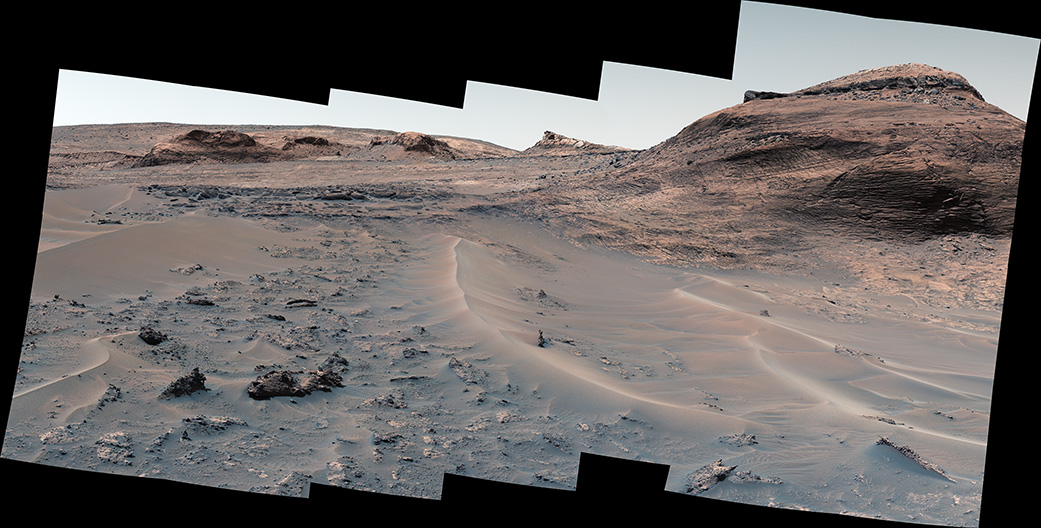NASA’s Curiosity rover has experienced many tests over 10 years on its way to a triumphant arrival in the so-called “sulfate region” of Gale Crater. This fascinating place is full of salt minerals and is a real treasure trove for scientists exploring the history of water on the Red Planet.

The space Agency’s Mars Reconnaissance Orbiter surveyed the area long before Curiosity arrived at Gale Crater in 2012, so researchers were looking forward to seeing it up close. Therefore, NASA has described the sulfate zone as a “long-awaited region”. The rover recorded the achievement of the landmark in the panorama.
To get to its place, Curiosity overcame sand and sharp rocks, which over time severely damaged its wheels. Immediately upon arrival, Curiosity wasted no time getting to know the edge. “Shortly after arrival, the rover detected various types of rocks, signs of dried water and salty minerals such as magnesium sulfate, calcium sulfate and sodium chloride (table salt),” NASA reported.

Curiosity helps scientists solve some questions about the origin of salt minerals that could have been left by streams and ponds that dried up billions of years ago in the planet’s past. “Assuming the hypothesis is correct, these minerals offer tantalizing clues as to how and why the Red Planet’s climate has changed from more Earth–like to a modern frozen desert,” NASA said.
Among other things, Curiosity will look for signs of any organic molecules that may be present on the planet. Recently, organic matter on Mars has become a hot topic, since the Perseverance rover, which is Curiosity’s twin brother, found it in the Jezero crater. However, the discovery of organic molecules does not necessarily prove the existence of microbial life on Mars.
At the same time, the rover team is also busy developing ways to move on rocks and sand, while keeping Curiosity safe and functional, because the more interesting the scientific results become, the more obstacles Mars puts in front of the rover.
Earlier we reported about how a rock got stuck in the wheel of the Curiosity rover.
According to NASA
Follow us on Twitter to get the most interesting space news in time
https://twitter.com/ust_magazine

